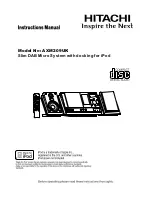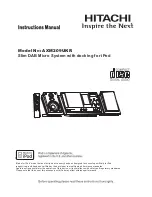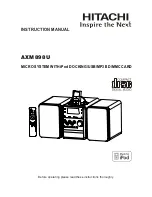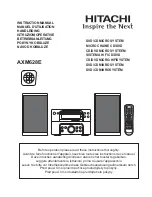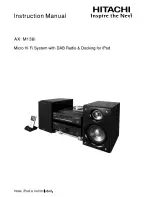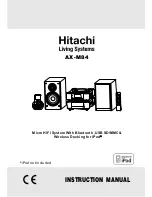
DV2 USB
Controls and Functions Cont.
6. Q-Start On/OFF SWItCh - This function works in conjunction with a compatible American
Audio
®
or American DJ
®
“Q” Start CD player. When used with a compatible CD player, you can use the
crossfader to start and stop the CD play. The ON/OFF “Q” START switch activates the fader “Q” start
feature. When the fader “Q” start feature is activated sliding the cROSSFADER (7) from left to right will
play or cue any CD player connected to the cONTROLLER jAckS (21) on the rear of the unit.
For example, connect a compatible dual CD player connect to mixer channels one and two
(refer to your CD player manual for proper set-up). Be sure the Fader “Q” Start feature is
activated on both channels. Slide the crossfader to the channel one position (full left) and
begin playback on CD drive one. Slide the crossfader to the channel position (far right). This
will immediately trigger the play function on CD drive two and return CD drive one to cue
mode. To return to normal fader operation turn the Fader “Q” Start ON/OFF SWITCH to the
OFF position.
7. CrOSSFaDer - This fader is used to blend the output signals of channels one and two together.
When the fader is in the full left position (channel 1), the output signal of channel one will be controlled
by the master volume level. The same fundamentals will apply for channel two. Sliding the fader from
one position to another will vary the output signals of channels one and two respectively. When the
crossfader is set in the center position, the output signals of both the channels one and channels two
will be even.
8. ChanneL FaDer - These faders are used to control the output signal of any source assigned to
its particular channel.
9. SOUrCe SeLeCtOr SWItCh - This switch routes the audio from the selected source to the cor-
responding channel. Setting the source to the USB position will route the audio from your computer to
the mixer.
Note: When the MIDI funtion is active the switch is deactivated to prevent accidental source
selection. In MIDI, external sources can be routed by setting your software to AUX or external
audio.
10. PFL BUttOnS - These buttons are used to activate a channels “CUE” mode. A red LED next
to the PFL button will glow when a channels cue mode is activated. Cue mode will send a channels
incoming signal to the headphones. The cue level is adjusted by the cuE LEVEL VOLuME cONTROL
(3). Be sure the cue level is set to minimum before putting a pair of headphones on. Be sure the cuE
MIxINg kNOb (2) is turned to the “CUE” position to hear the selected channel source.
11. taLkOVer BUttOn - When engaged this function will decrease all signal levels, except the
microphone level, by 15dB. A red LED next to the TALKOVER BUTTON will glow when the talkover
function is engaged. In the OFF position all signals will remain at their normal levels.
12. MICrOPhOne eQ SeCtIOn - These controls are used to adjust the microphone treble level and
bass levels. Each microphone input has a separate channel EQ.
MICrOPhOne treBLe COntrOL - This knob is used to adjust the treble levels of the
Microphone with a maximum signal gain of +10dB or maximum signal decrease of -30dB.
Turning the knob in a counter-clockwise direction will decrease the amount of treble
applied to the microphone signal, turning the knob in a clockwise direction will increase
the amount of treble applied to microphone signal.
MICrOPhOne BaSS COntrOL - This knob is used to adjust the low frequency levels of
the microphone with a maximum signal gain of +10dB or maximum signal decrease of -30dB.
Turning the knob in a counter-clockwise direction will decrease the amount of bass applied to
©
American Audio
®
- www.AmericanAudio.us - DV2 USB Instruction Manual Page 6































